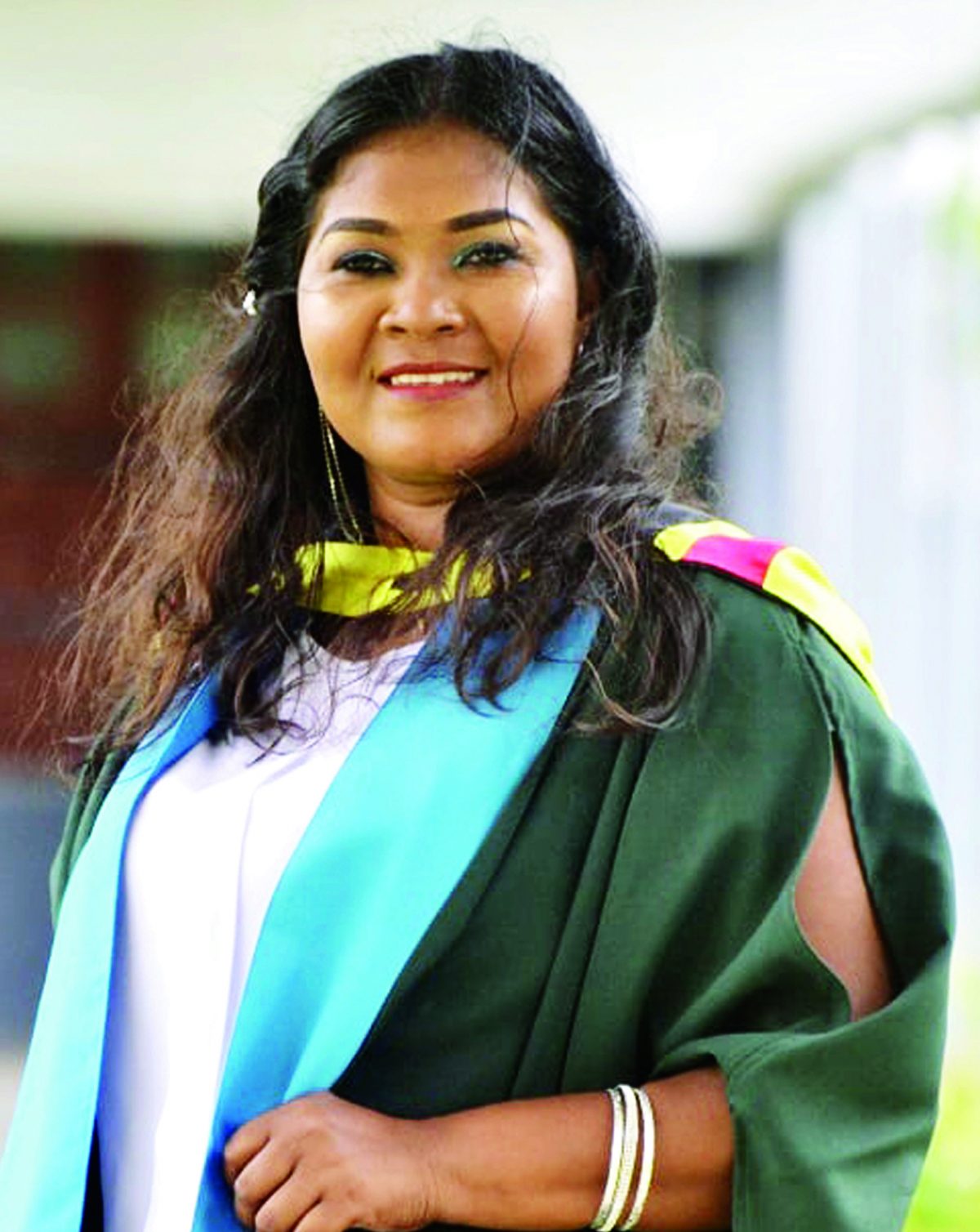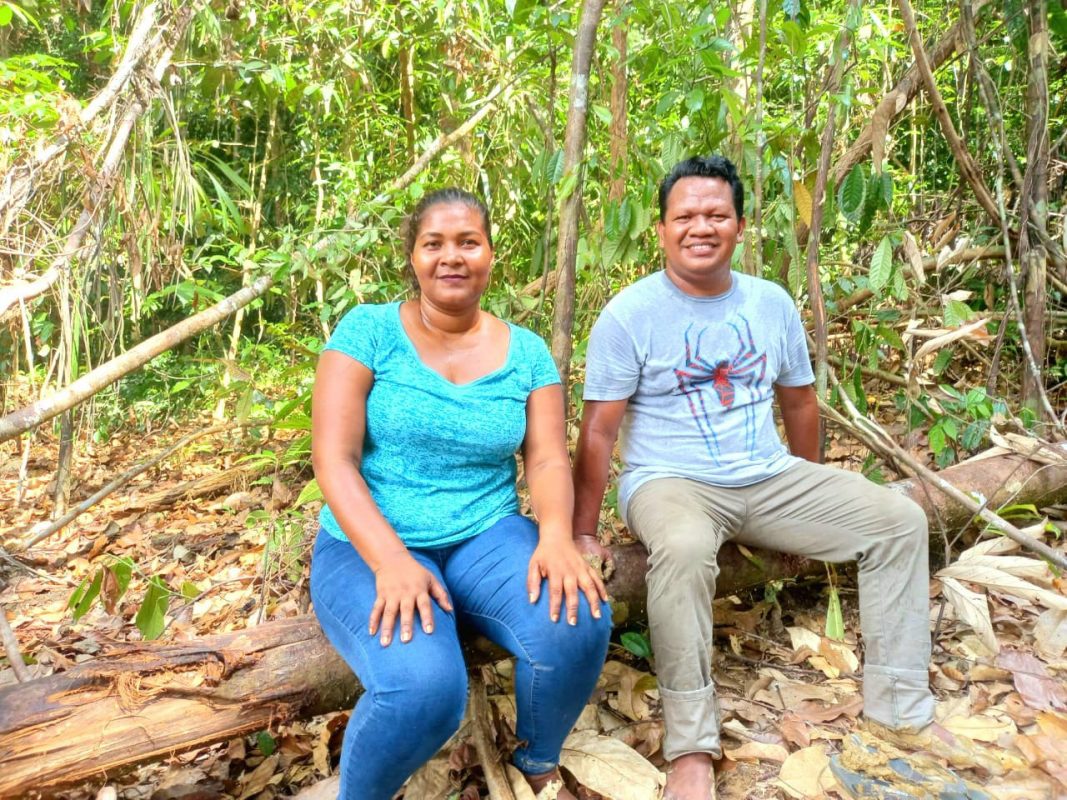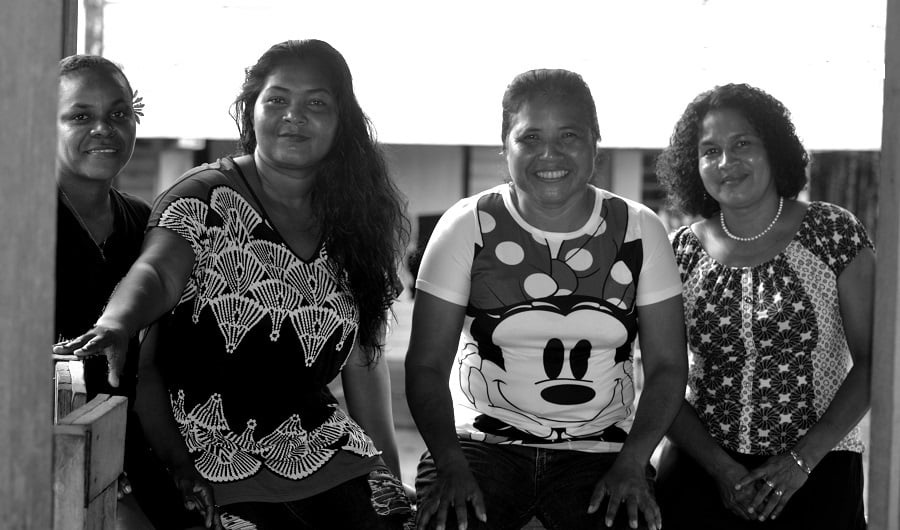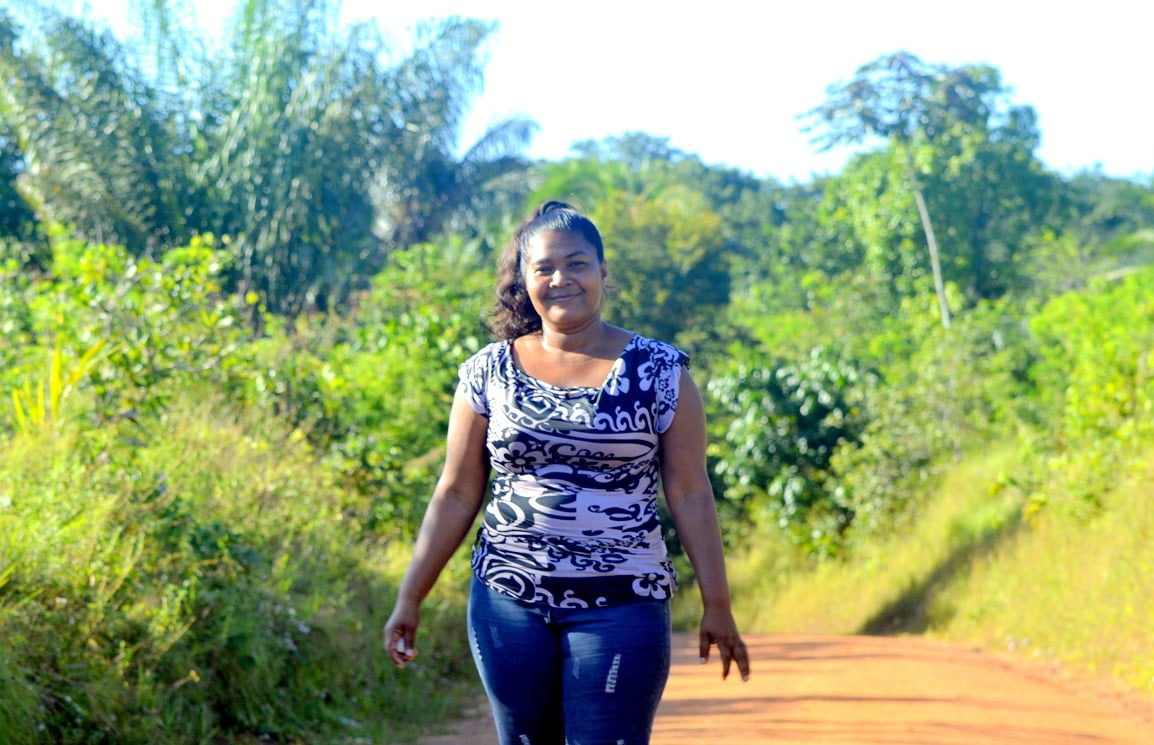When Althea Harding was attending the University of Guyana (UG) about five years ago, a lecturer asked Indigenous students what nation they belonged to. Harding identified herself as Carib. The lecturer then asked her to visit a juvenile, from the Carib community of Barabina, who was in detention at the juvenile centre at Sophia. Harding went to see the young man and discovered that he spoke no English. At the time she did not know as much Carib as she now knows. However, she said, “The teachers complained that he would not do any work or any activities assigned to him. I found out that he knew no English.
They thought he was just rebellious. I called my aunt right away and she spoke to him. He told her he knew no English. It was alleged that he had killed someone. They picked him up from Baramita where he was found with the body of dead man and a bloody knife on the scene. They thought he had killed the man. Because he could not speak any English they took detained him… He said he wanted his parents to know he was okay. He wanted so many things. He was at Sophia for two years before he was given a hearing and released. That was when I decided that I had to learn the Carib language.”
Harding, 34, a teacher, community organiser, and women’s rights and cultural activist of Kwebanna, a predominantly Carib village on the Waini River, in Region One (Barima/Waini) is currently engaged in the revitalisation of the Carib culture and particularly the Carib language by learning and documenting it to teach to others and for communication purposes.
“I am working on a Carib-English dictionary and an everyday-conversation English-Carib handbook so that professionals on the coastland, like doctors at the Georgetown Hospital who see Carib patients and cannot communicate with them—a sentence or two might be able to help them communicate,” Harding told Stabroek Weekend in a recent interview.
Her objective, she said, is to publish the Carib dictionary and the Carib handbook and make them user-friendly.
“I noticed more than one time the Caribs would go to the Georgetown Hospital and the doctors wouldn’t be able to communicate with them.”
After returning to the village, Harding started to learn the language, became more fluent in it and started putting the texts together for a dictionary and handbook project.
Harding recently obtained a $2 million-grant from Conservation International for a one-year project that focuses on the revitalisation of the Carib culture as well as women empowerment in the community.
“My mother is Carib. My mother speaks the Carib language fluently. I never took the language seriously. You know when you’re young we took part in the other Indigenous cultural activities but we did not check on the language,” she explained.
Born in Port Kaituma, Harding spent her early childhood at Waikerebi in the Barama River. At about four to five years she moved with her mother, who settled in Kwebanna in the Moruca Sub-region. She grew up in a single-parent home along with two brothers and two sisters.
Harding attended the Kwe-banna Primary and Santa Rosa Secondary schools.
“I lived in the dorms at Santa Rosa Secondary because my home was 22 miles away.”
She recalled, “When my mom left, I really cried. I was tall and the tallest in my batch and my batch mates would tell me ‘You are so big and you behaving like a lil child’. I was only ten years old but I was big in size compared to the others. Eventually I came to like the dorms. Having to do things for myself helped to make me an independent person. I was able to think for myself and I learned to make use of whatever little I had.”
In the first three years of her school life at SRSS, Harding and other students from Kwebanna returned home only for the Christmas, Easter and August holidays.
“When I got to Form Four, a group of us walked home on weekends. We left the dorms at Kumaka on a Friday at about 1.30 pm and reach Kwebanna about 7.00 pm or 8.00 pm. On Sundays, we would leave at about 3.00 am and stop at Seven Miles, Kumaka Road, where one of my friend’s grandmother lived. We would spend some time there and then continue on our way to the dorms…. We weren’t scared of wild animals. We took short cuts. We drank the water from the streams that are found along the way so we were refreshed.”
Harding completed her secondary school education in 2003 and she also started teaching that same year, while she was just 15 years
Social ills
Speaking on the women empowerment component of her project, Harding explained that she is working with 25 women on issues that include domestic violence, teenage pregnancy and other social ills. At the same time the women are engaged in learning new skills, including craft-making, that would lead to gainful employment.
Harding, a teacher by profession, also include games in her classes to make their activities fun and to reinforce learning.
“The older village craftsmen and craftswomen teach us to make a variety of things like baskets and mats. In the future, I hope we become better basket weavers. We are making costume jewelry. Our objective is that by Amerindian Heritage Month we will have some craft to sell. We are making use of indigenous materials, like nibbi, tibisiri and mucru. I buy beads and shells, which are used in the designs that decorate bottles and mirrors. We also do floral arrangements.”
Noting that there is no craft shop in the village, she said, she hopes that in the near future, the women will be capable enough to produce souvenirs of quality and quantity so that visitors to the community can take mementos of Kwebanna with them.
“Maybe in the future we can bring our stuff to Georgetown to the heritage activities or even at Moruca Day we take down to Santa Rosa or Waramuri, wherever the activities are held.”
Harding was prompted to work with the women, she said, because a lot of them are single parents. Apart from subsistence farming, there are no other jobs and some would have to leave the village to find employment. Many leave their children behind in the care of relatives.
In addition, Harding is also working to empower women to leave relationships in which they suffer abuse. “I speak up a lot about this in my village because it is found a lot in my village. I want to educate women about domestic violence and empower them to get out of it. A lot of women are abused by their husbands or their partners and they would not leave the home because it is their belief that a husband and a wife must live together regardless.”
Harding said that as a survivor of domestic violence, she is very vocal about the issue. She said, “That motivated me to want to want to show other women that they can be independent.”
Speaking of her experience with domestic violence, she said, she told herself at a young age that she wanted to marry and have a family. “I didn’t want to be like my mom and have children without a father in the home. When my partner and I started living together we fought a lot. At one time, he almost killed me. I was a teacher and it was just work and home for me. At the time I never took part in any activities in the village. On the other hand, my partner used to drink, come home drunk and accuse me of infidelity, which was what he was doing outside of the home. He would hit me on my head and bang my head on the door. This continued for years. I told no one. Everybody knew I was a teacher. They hold you up as a perfect public figure in the community. I was being abused behind doors. Next day I would go to school and you would not see anything on my body. The last time he hit me he almost disfigured my face. On that occasion I could not hide it because my face was damaged and I have a scar from a cut on my chin.” Finally, she left the relationship when her two daughters were a year and three years old. She promised herself never to find herself in a situation like that again.
“I stuck to my words because I lived single with my daughters for 14 years before getting back into a relationship and getting married.”
After the break-up, she relocated to Port Kaituma where she taught for a year then returned to Kwebanna.
“I also tell victims that if you are in the environment it is difficult to sever ties. You have to get out from that environment.” By the time she returned to Kwebana, her former partner had left the village and she severed all connections with him. “I took care of my children. My baby is 16 and my big daughter will soon be 18.”
Stressing that domestic violence is a chronic disease in Kwebana, she said, last year, one of her teaching colleagues broke both of her arms after jumping from the verandah to escape her husband’s beating. She endured the beatings for 18 years. Harding said she advised her several times but she was not ready to leave her husband. “I told her it will be hard moving away and she will face challenges but it is better to know that she is alive and is able to see her children grow up. He used to kick her and he even threatened to kill her and the children.”
Following the incident in which the teacher broke her arms, she obtained a transfer and is now out of the region.
On becoming a teacher
Harding wanted to become a doctor but got pregnant shortly after applying to do the medical programme in Cuba and aborted the idea. “It was never my intention to be a teacher. Today I love my job. Sometimes my mom would tell me, ‘Why you don’t take your mattress to school and sleep there?’ because of the time I spend on the job. Early mornings and late afternoons.”
Harding has been the acting head teacher of Kwebanna Primary since September 2021.
She was on the first batch of teachers to be trained by the Cyril Potter College of Education (CPCE) via distance training in Region One and the youngest on the batch to graduate in 2006.
She is also the first past student of Kwebanna Primary to graduate with a bachelor’s degree in primary administration from the University of Guyana. She graduated in 2021.
“It feels good to know that I am the first on the CPCE distance education programme and the first from my primary school to graduate from UG and I am now heading the school.”
One of the disadvantages of Kwebanna Primary is that it was built to accommodate 100 children but it is now housing 240 children from grades one to 11. “We were promised an extension to the school a long time now and we are going into 2023 with the student enrollment increasing.”
She also noted that while a doctor’s quarters has been built at Kwebanna, they have no doctor. “We need a resident doctor to be stationed at our health centre. We get regular visits but we have residents from other nearby villages who come here at any time to seek medical attention. It is a main point on the Waini River and we do not have a doctor stationed here.”









